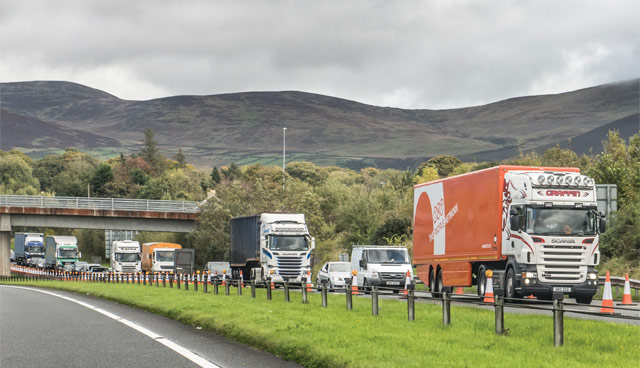How smart borders function

The glacial pace of the Brexit negotiations has led to the feasibility of a technological solution to the Irish border issue being suggested on more than one occasion. With Brexit set to return to centre stage after the UK’s general election, eolas examines how smart borders actually work.
The border between Norway and Sweden has frequently been cited as one of the world’s more technologically advanced borders. Given its status as a functioning land border between an EU member state and a non-EU member state, it is commonly looked to as an example for those who wish to push the idea of a technological solution to border negotiations.
Cars cross the Swedish-Norwegian border through unstaffed border posts that are equipped with cameras using automatic number plate recognition (ANPR) technology. Every entry into either country is logged within the system.
A complex computer system allows goods to be declared to customs before they have left their warehouses, but lorries are still required to stop at staffed crossing points where their goods are physically checked. While the technological system allows for the process to be streamlined, checks take on average 20 minutes and there are approximately 1,300 checks per day by the Norwegian authorities at Svinesund, the busiest of the border crossings. Given that there are roughly 13,000 crossings of the Irish border by heavy goods vehicles per day, even the relative speed of a 20 minute customs check could cause extensive delays.
Of course, what aids this relatively speedy border process is something beyond the technological. Norway may not be a member of the EU, but it is still a member of the single market, meaning that goods and product standards are aligned, creating a trust across the 1,000 miles of border between the two countries. The confusion over the future status of the UK, and Northern Ireland in particular, mean that neither trust nor the alignment of product standards are certain across Ireland’s comparatively small border of 310 miles. Sabine Weyand, at the time EU Deputy Chief Negotiator for the Brexit process and now EU Director General for Trade, has already said that existing technology will not be the solution to issue at the border.
Lars Karlsson, the President of KGH Border Services, former Director of World Customs Organisation and Deputy Director General of Swedish Customs, has speculated that a new, but expensive, technology could be the solution to the issue. Karlsson has proposed the idea of a satellite system linked to the phones of drivers of HGVs could automatically register crossings as they happen. Again, the issue of trust comes into play for such a proposal to become feasible even before the technology is developed.
In a report for the European Parliament on what he termed “Smart Border 2.0”, Karlsson called for the establishment of free movement lanes for those covered by the Common Travel Area agreement, a cooperative approach between all concerned parties, enhanced driver’s licenses and the use of radio frequency identification technology as well as ANPR.
To conclude his report Karlsson listed what he believed to be required for the implementation of a Smart Border 2.0:
• A bilateral EU-UK agreement regulating advanced customs cooperation;
• Mutual recognition of authorised economic operators;
• A customs-to-customs technical agreement on exchange of risk data;
• Pre-registration of operators and people;
• Identification system by the border;
• A single window with one-stop-shop-elements;
• A unique consignment reference number;
• Simplified customs declaration system (100 per cent electronic) with re-use of export data for imports;
• Mobile control and inspection units; and
• Technical surveillance of the border (CCTV, ANPR etc).





